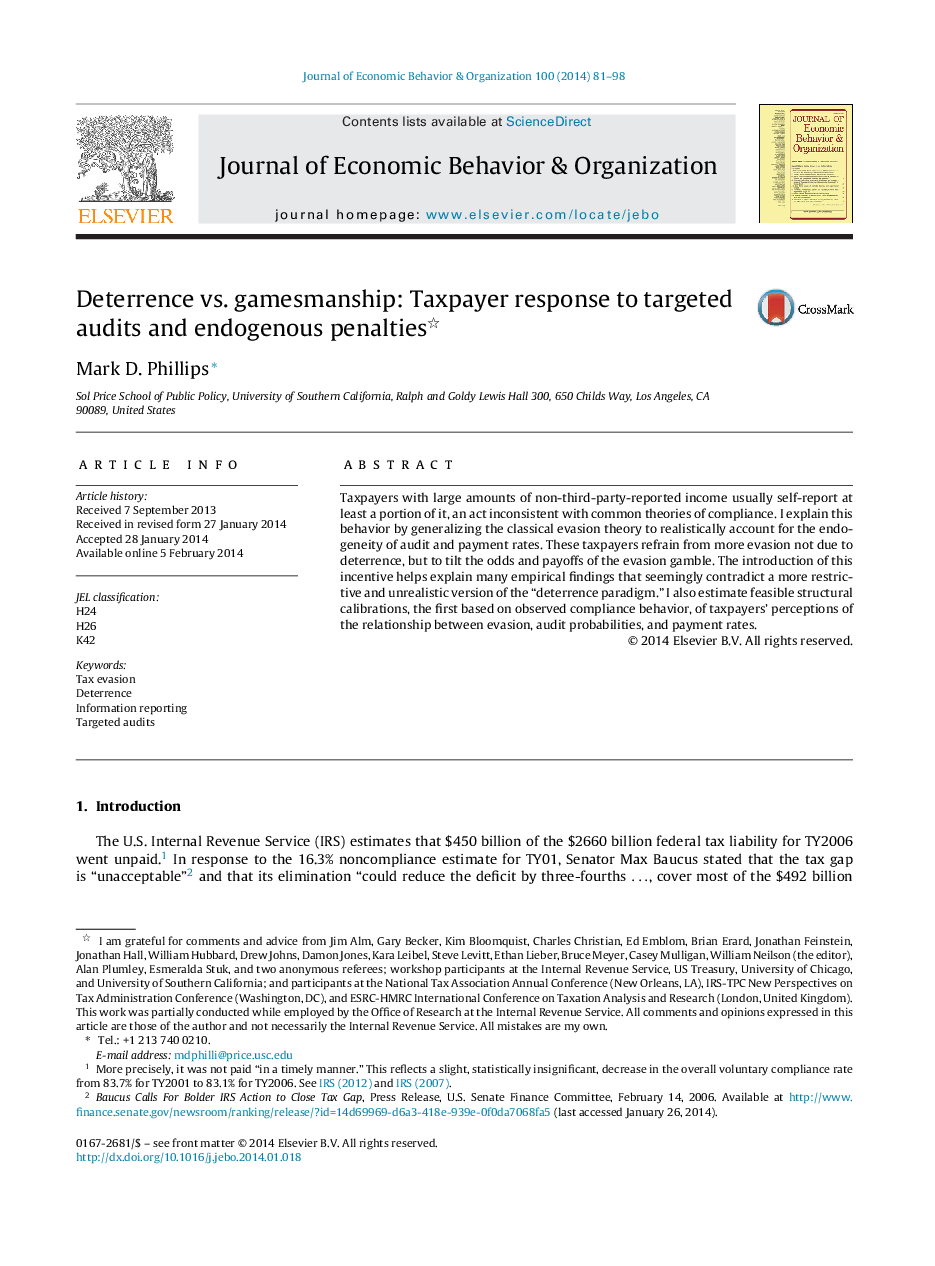| Article ID | Journal | Published Year | Pages | File Type |
|---|---|---|---|---|
| 883543 | Journal of Economic Behavior & Organization | 2014 | 18 Pages |
•Audit selection and payment rates are endogenous to the amount of evasion.•A deterrence model that realistically accounts for this predicts far less evasion.•A taxpayer wants to ensure his preferred outcome even if evasion has a high return.•Other findings that appear to contradict the classical framework can be explained.•Calibrations estimate how audit and payment rates relate to the amount of evasion.
Taxpayers with large amounts of non-third-party-reported income usually self-report at least a portion of it, an act inconsistent with common theories of compliance. I explain this behavior by generalizing the classical evasion theory to realistically account for the endogeneity of audit and payment rates. These taxpayers refrain from more evasion not due to deterrence, but to tilt the odds and payoffs of the evasion gamble. The introduction of this incentive helps explain many empirical findings that seemingly contradict a more restrictive and unrealistic version of the “deterrence paradigm.” I also estimate feasible structural calibrations, the first based on observed compliance behavior, of taxpayers’ perceptions of the relationship between evasion, audit probabilities, and payment rates.
